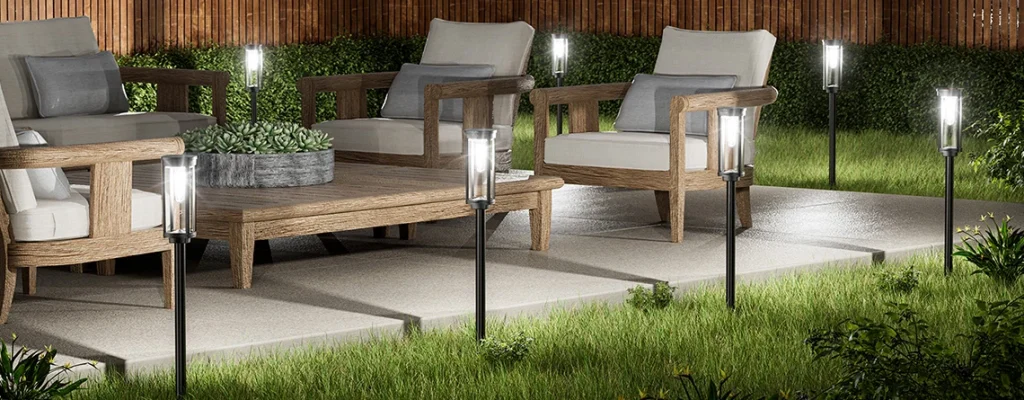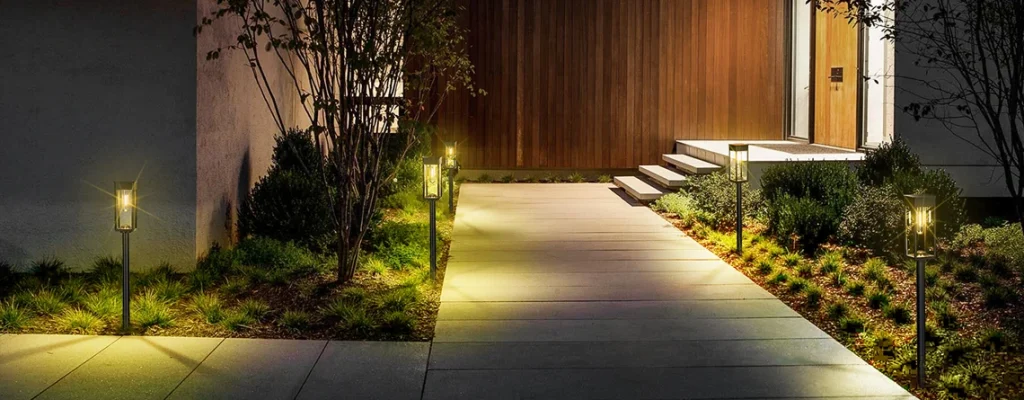Why Climate Matters for Solar Lighting
Solar lighting has become a go-to solution for eco-friendly illumination, but its performance hinges on the environment it operates in. The climate impact can make or break how well these devices function, especially in extreme weather. From icy tundras to scorching deserts, solar lighting performance varies widely. This article dives into how these systems hold up under tough conditions and the technical improvements pushing them forward. Let’s explore what makes solar lights tick when the weather doesn’t play nice.

Thriving in the Cold: Solar Lights in Frigid Regions
Keeping Efficiency High in Low Temperatures
In freezing climates, solar lights face unique challenges. Subzero temperatures can sap low temperature efficiency from batteries and reduce photovoltaic durability. To counter this, manufacturers have developed cold-resistant design features. For instance:
- Insulated battery compartments: These shield lithium-ion or lead-acid batteries from freezing, ensuring consistent power output.
- Low-temperature electrolytes: Specialized battery tech keeps energy flowing even when the mercury drops below -20°C.
- Anti-frost coatings: Applied to solar panels, these coatings prevent snow and ice buildup, maintaining photovoltaic durability.
Such innovations mean solar lights can keep glowing through harsh winters, from Alaskan villages to Himalayan outposts. For example, in northern Canada, solar streetlights with these features have cut maintenance costs by 30% compared to older models, proving their worth in punishing cold.
Standing Strong in Heat and Rain: Tropical Challenges
Battling Moisture and UV Rays
In hot, rainy regions like Southeast Asia or Central America, solar lights must tackle relentless humidity and blazing sun. Weatherproofing is non-negotiable here, with waterproofing and UV protection at the core of durable designs. Key adaptations include:
- IP65-rated enclosures: These seal out water and dust, ensuring components stay dry during monsoons.
- UV-resistant materials: Polycarbonate or tempered glass panels resist yellowing and cracking under intense UV exposure.
- Heat management systems: Built-in vents or heat sinks prevent overheating, keeping electronics safe in 40°C+ conditions.
These features shine in places like Thailand, where solar garden lights withstand daily downpours and scorching afternoons. Heat management also extends battery life, as excessive heat can degrade lithium cells by up to 20% annually if left unchecked. With these advancements, solar lights in tropical zones are more reliable than ever.
Adapting on the Fly: Smart Features for Extreme Weather
Smarts That Shine in Any Condition
Solar lights aren’t just passive devices anymore—they’re getting smarter. Self-adjusting brightness and environmental sensing allow them to adapt to extreme weather in real time, ensuring reliable illumination in extremes. Here’s how they do it:
- Light sensors: These adjust brightness based on ambient conditions, saving power during foggy or stormy days.
- Temperature monitors: Built-in sensors tweak performance to avoid battery strain in extreme heat or cold.
- Motion detection: In low-visibility conditions like blizzards, lights ramp up output only when needed, conserving energy.
Take Greenland’s coastal towns, for example. Solar lights equipped with environmental sensing maintain steady output during polar nights, using minimal energy while still delivering reliable illumination in extremes. These systems cut energy waste by up to 25%, making them a game-changer for remote, weather-battered regions.

Pushing the Limits: Technical Innovations Driving Resilience
From Panels to Power Storage
The backbone of solar lighting’s resilience lies in technical improvements across the board. Beyond cold-resistant design and weatherproofing, engineers are rethinking every component:
- Next-gen solar cells: Monocrystalline panels now achieve 22% efficiency, even in low-light or cloudy conditions.
- Battery breakthroughs: Lithium iron phosphate (LiFePO4) batteries offer longer lifespans and better low temperature efficiency than traditional options.
- Smart controllers: Microchips optimize charging and discharging cycles, balancing heat management with power needs.
These advancements aren’t just lab experiments. In Australia’s Outback, solar lights with these upgrades have reduced failure rates by 40% compared to older systems, proving their climate adaptability in real-world settings.
Meeting Global Needs: Solar Lighting’s Bright Future
A Solution for Every Corner of the World
The beauty of modern solar lighting lies in its global applicability. From deserts to rainforests, these systems are built to handle diverse climates while meeting user needs. The push for climate adaptability has led to designs that deliver stable illumination no matter the conditions. For instance:
- Modular designs: Users can swap components like batteries or panels to suit local weather patterns.
- Scalable systems: From small garden lights to industrial floodlights, solutions fit both rural homes and urban streets.
- Affordable durability: Advances in manufacturing have cut costs, making advancing technology accessible to developing regions.
In sub-Saharan Africa, solar lights with these features have brought reliable lighting to over 10 million off-grid households, slashing reliance on kerosene by 50% in some areas. This shows how stable illumination can transform lives while standing up to climate impact.
Conclusion: Lighting the Way Forward
Solar lighting has come a long way from being a fair-weather solution. Thanks to advancing technology, these systems now thrive in extreme weather, from icy poles to humid tropics. With climate adaptability baked into their design, they offer stable illumination that meets user needs worldwide. Whether it’s cold-resistant design for arctic winters, weatherproofing for tropical storms, or self-adjusting brightness for unpredictable conditions, solar lights are proving their worth. As technical improvements continue, they’re set to brighten even the harshest corners of the globe, making sustainable lighting a reality for all.

Comments